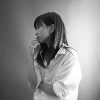When working with raw materials like wood and natural stone, even the discarded fragments carry a quiet beauty. Instead of sending them to the landfill, Belgium-based designer Ariane van Dievoet explores how these remnants can take center stage in her work. The result is a series of one-of-a-kind pieces that prove quality materials can shine, even in their second life.
CONNECTIONS side table \\\ Photo: Oksana Tkachuk
There are a couple of challenges that come with working in discarded or reclaimed materials. The first is reproducibility. Because fragments vary in size, shape, and color, the final design is nearly impossible to replicate. The second is quality. Many fragments, especially those sourced from demolition sites, come with flaws. Rather than see these issues as limitations, van Dievoet embraces them, allowing constraints to shape the work. “Creating from materials that have already been used forces me to take into account their shape, thickness, and any breaks,” she explains. “These constraints are a driving force and inspiration in my creative process.”
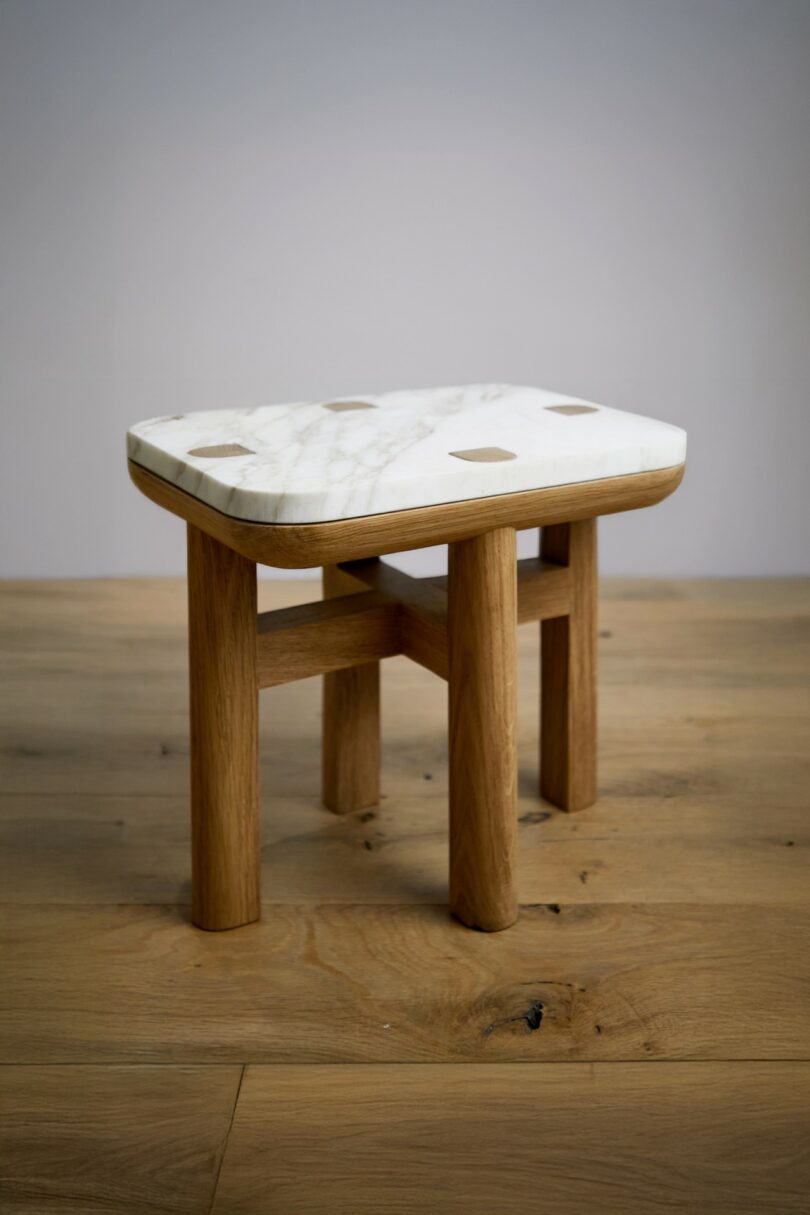
CONNECTIONS side table \\\ Photo: Oksana Tkachuk
Her CONNECTIONS collection takes on the challenge of reproducibility head-on. Instead of striving for uniformity, van Dievoet builds continuity through the frame, crafted from oak sourced in Brussels’ Sonian Forest, while reclaimed stone ensures every piece is one-of-a-kind. Using a precision water jet cutter, she carves cut-outs that allow the wooden structure to pass through the stone; the stone’s weight locks everything into place. The result is a system that supports a cohesive product line while celebrating the uniqueness of each reclaimed piece.
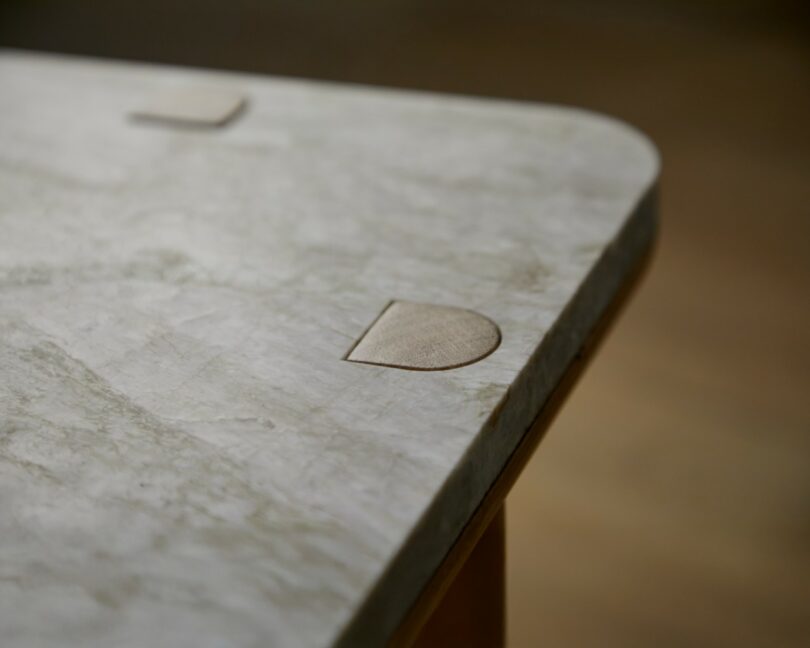
CONNECTIONS side table \\\ Photo: Oksana Tkachuk
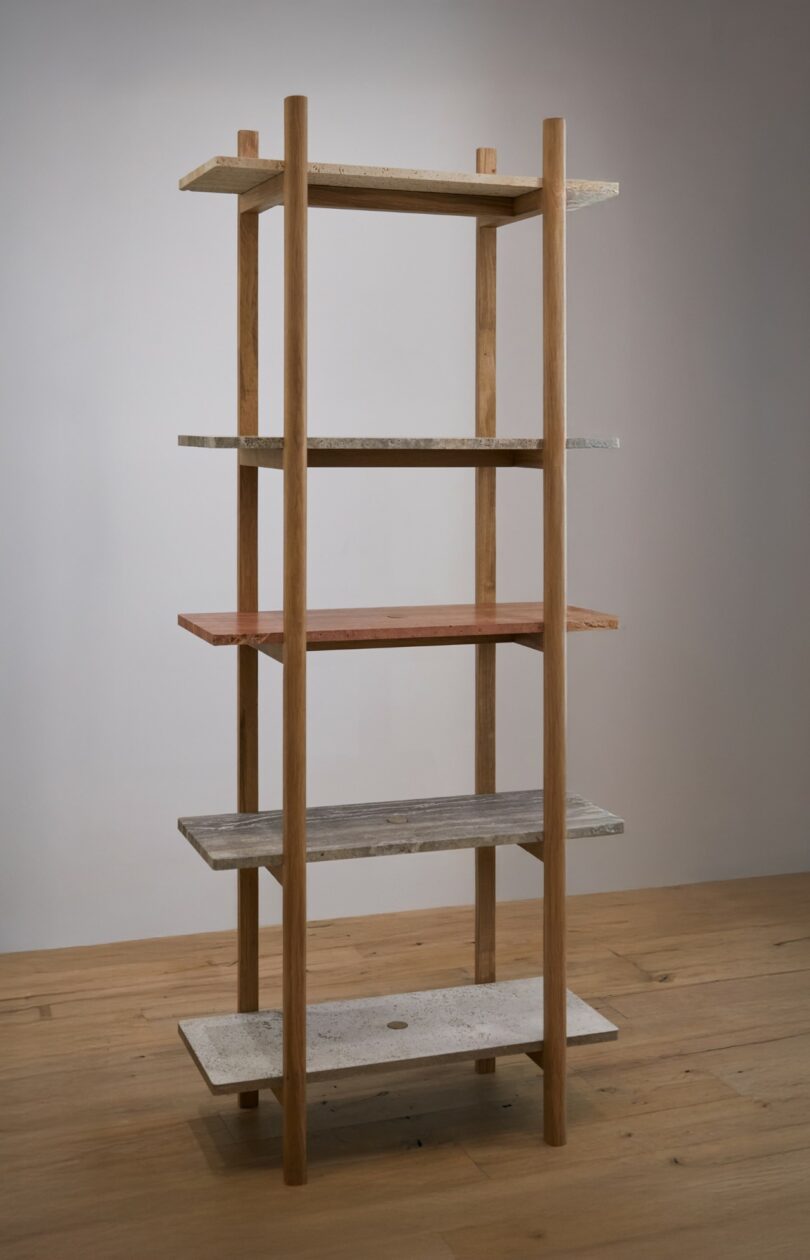
Connections shelf \\\ Photo: Oksana Tkachuk
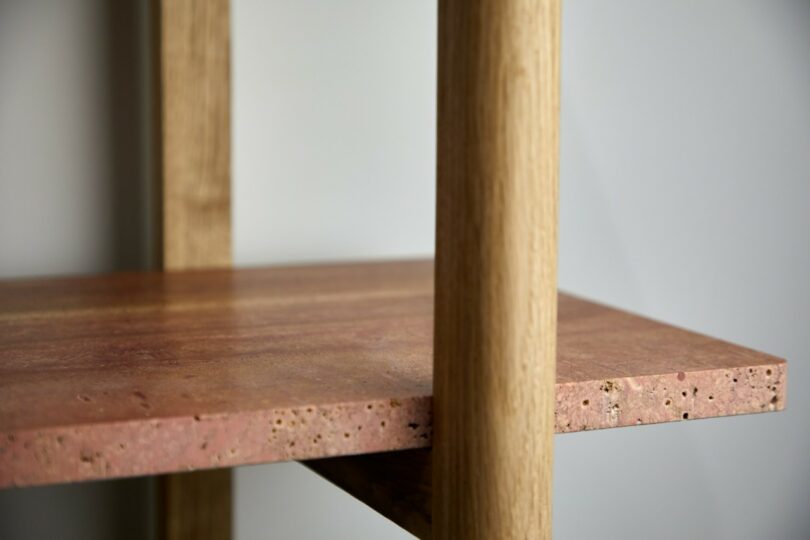
CONNECTIONS shelf \\\ Photo: Oksana Tkachuk
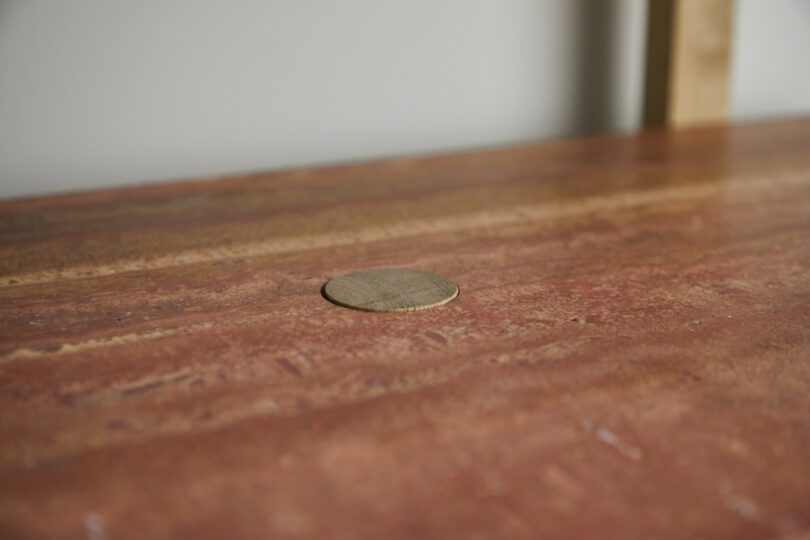
CONNECTIONS shelf \\\ Photo: Oksana Tkachuk
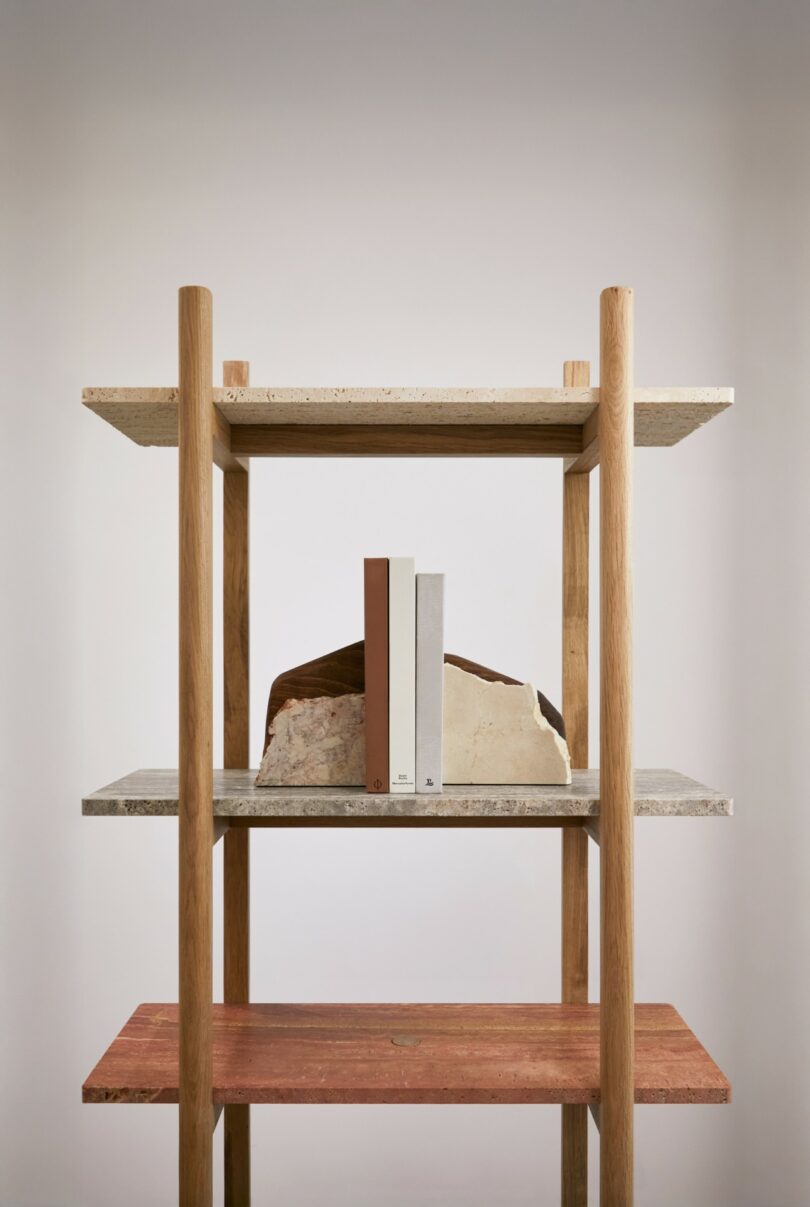
CONNECTIONS shelf, Collected Matter bookends \\\ Photo: Oksana Tkachuk
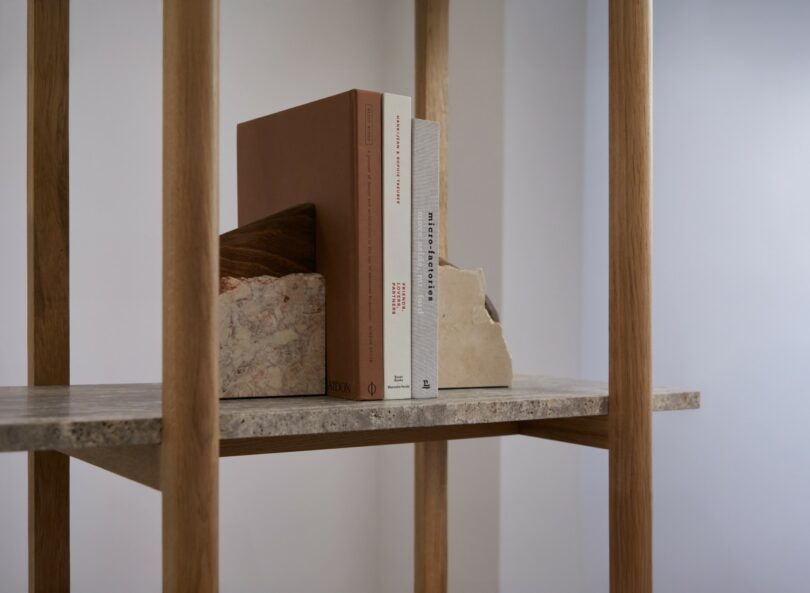
Collected Matter bookends \\\ Photo: Oksana Tkachuk
The Collected Matter and Reflected Matter collections address the issue of flaws. In Collected Matter, materials gathered from production or demolition sites are given a second life as functional objects in their raw state. Each piece – whether a bookend, box, or trinket tray – becomes a stage for its new owner’s own collection of objects.
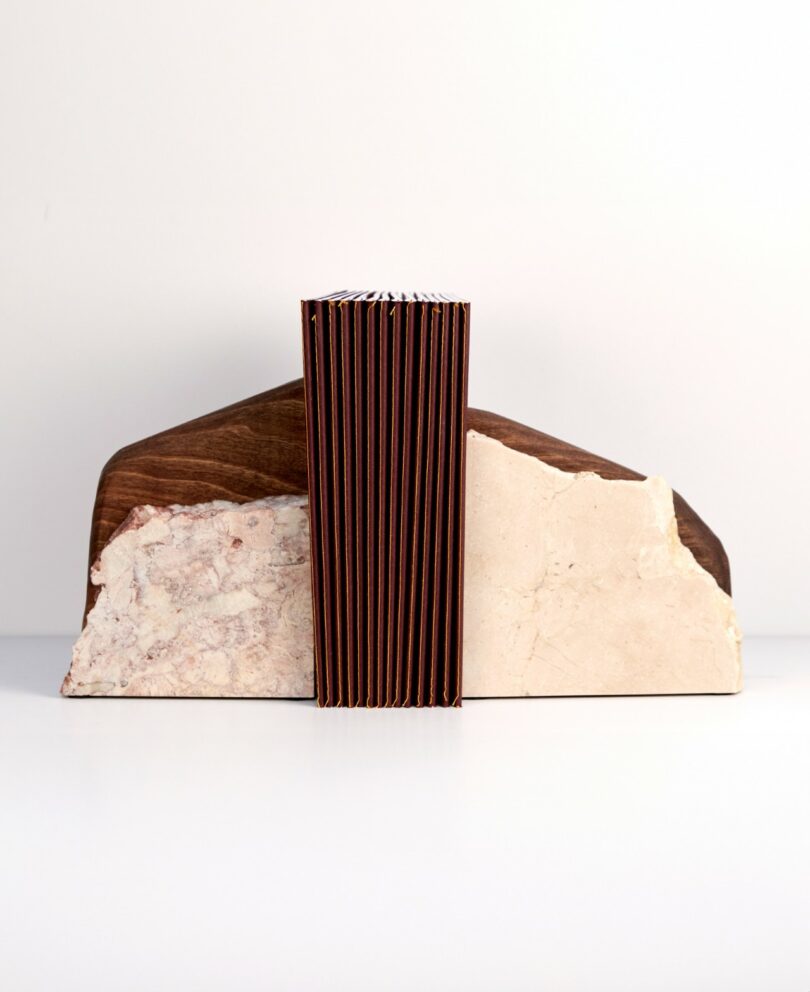
Collected Matter bookends \\\ Photo: Oksana Tkachuk
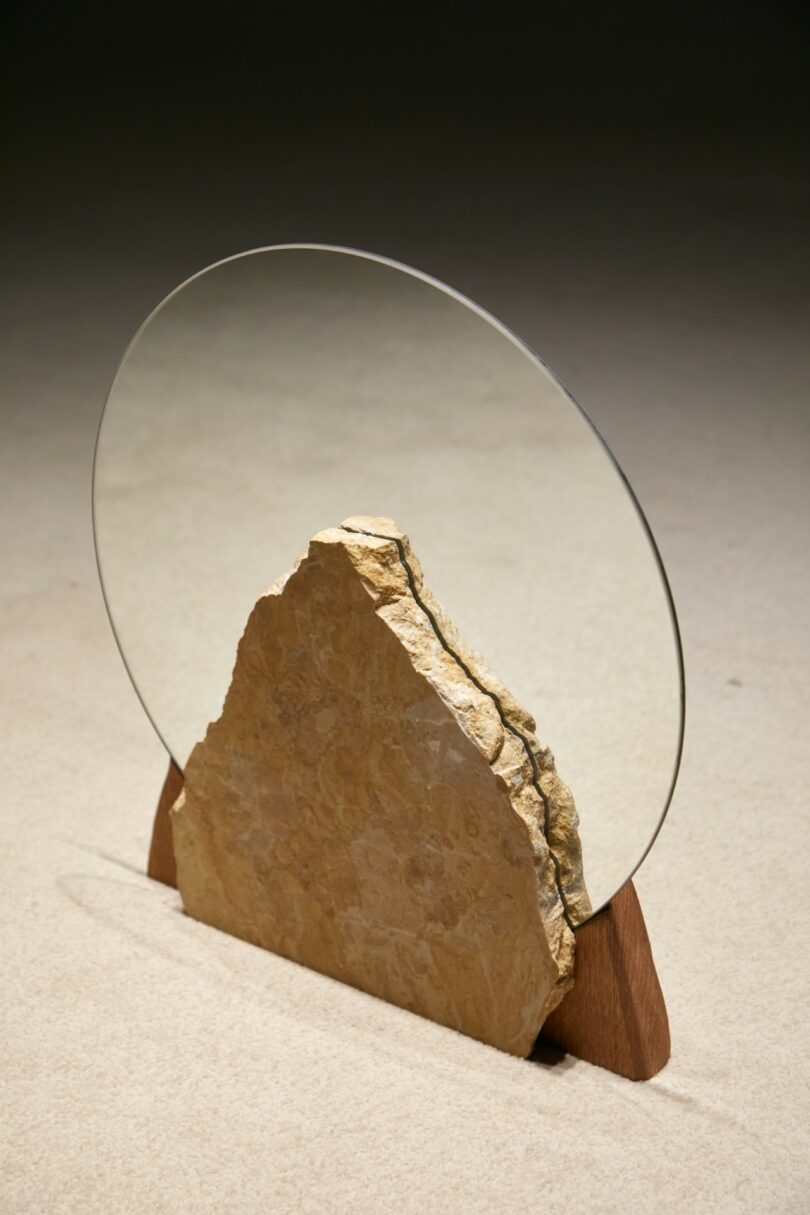
Echo Mirror \\\ Photo: Oksana Tkachuk
Rather than concealing imperfections, Reflected Matter series celebrates them through mirrors. Here, natural stone fragments hold mirrors upright, the reflective surface drawing attention to every edge, crack, and contour of the supporting stone. The result is a dialogue between fragment and reflection, flaw and finish.
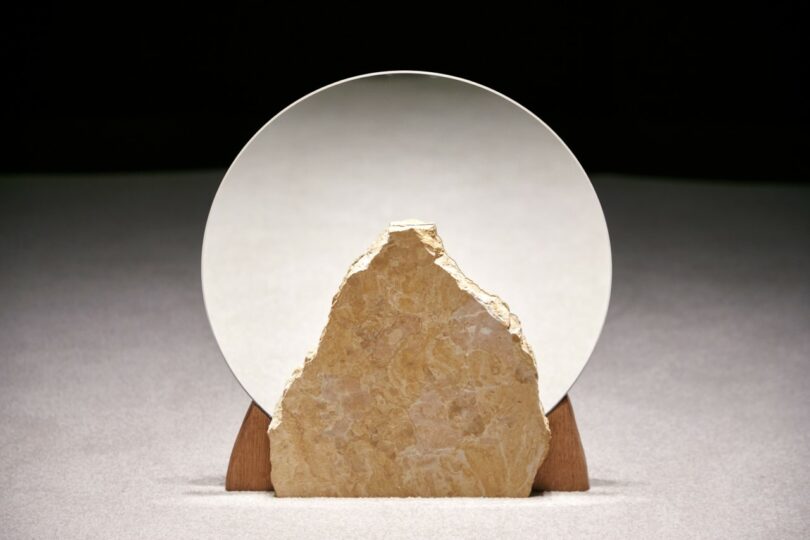
Echo Mirror \\\ Photo: Oksana Tkachuk
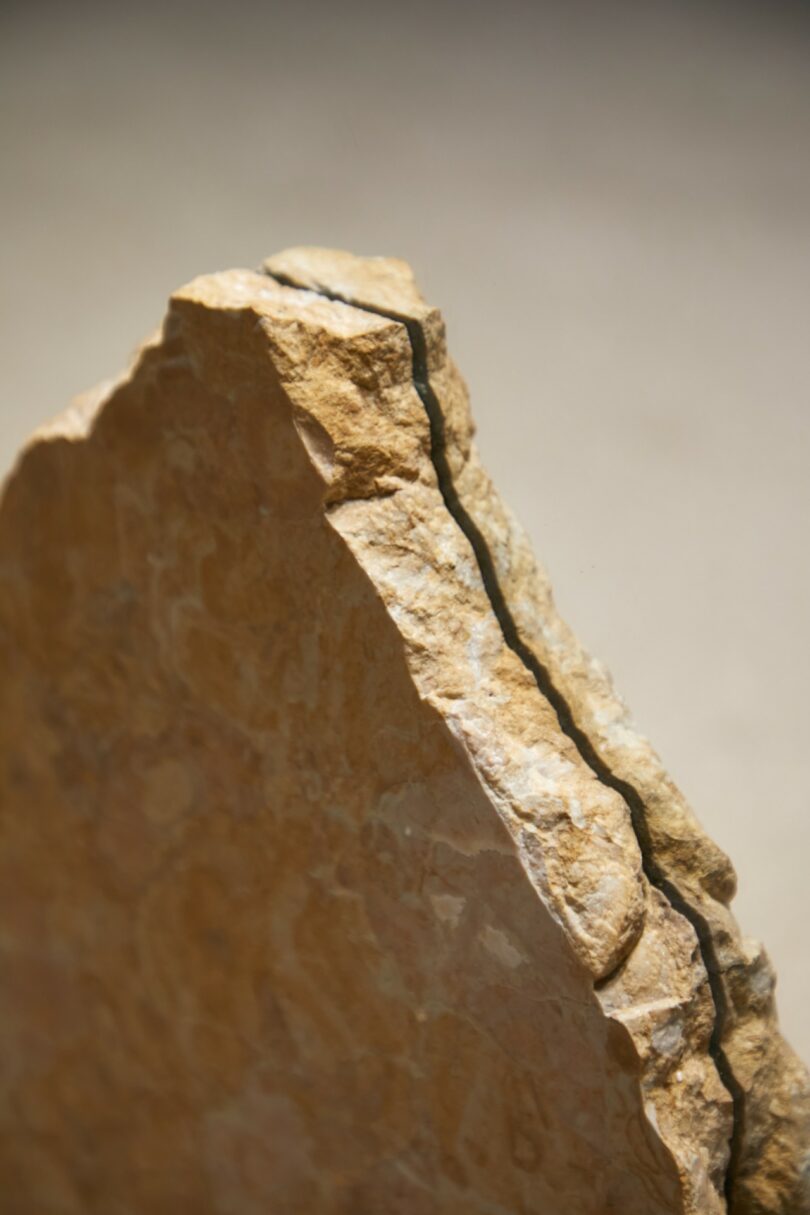
Echo Mirror \\\ Photo: Oksana Tkachuk
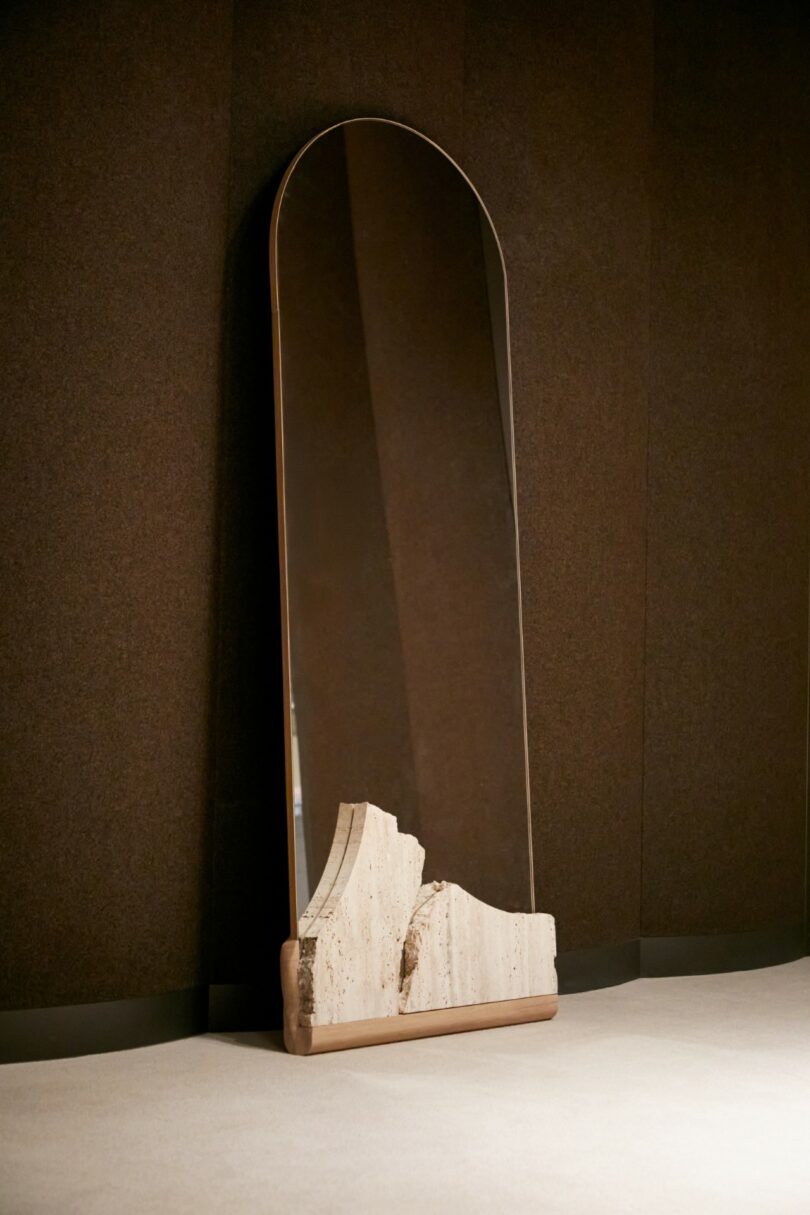
Tethys Mirror \\\ Photo: Oksana Tkachuk
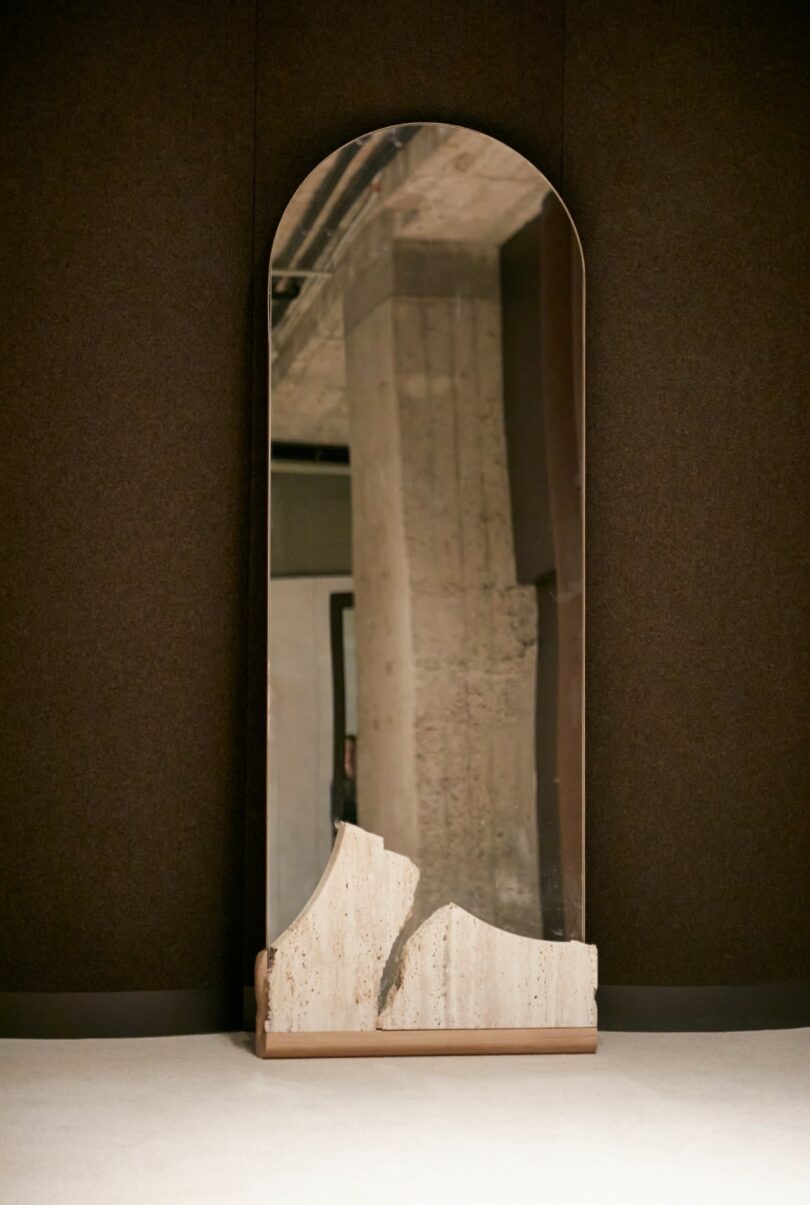
Tethys Mirror \\\ Photo: Oksana Tkachuk
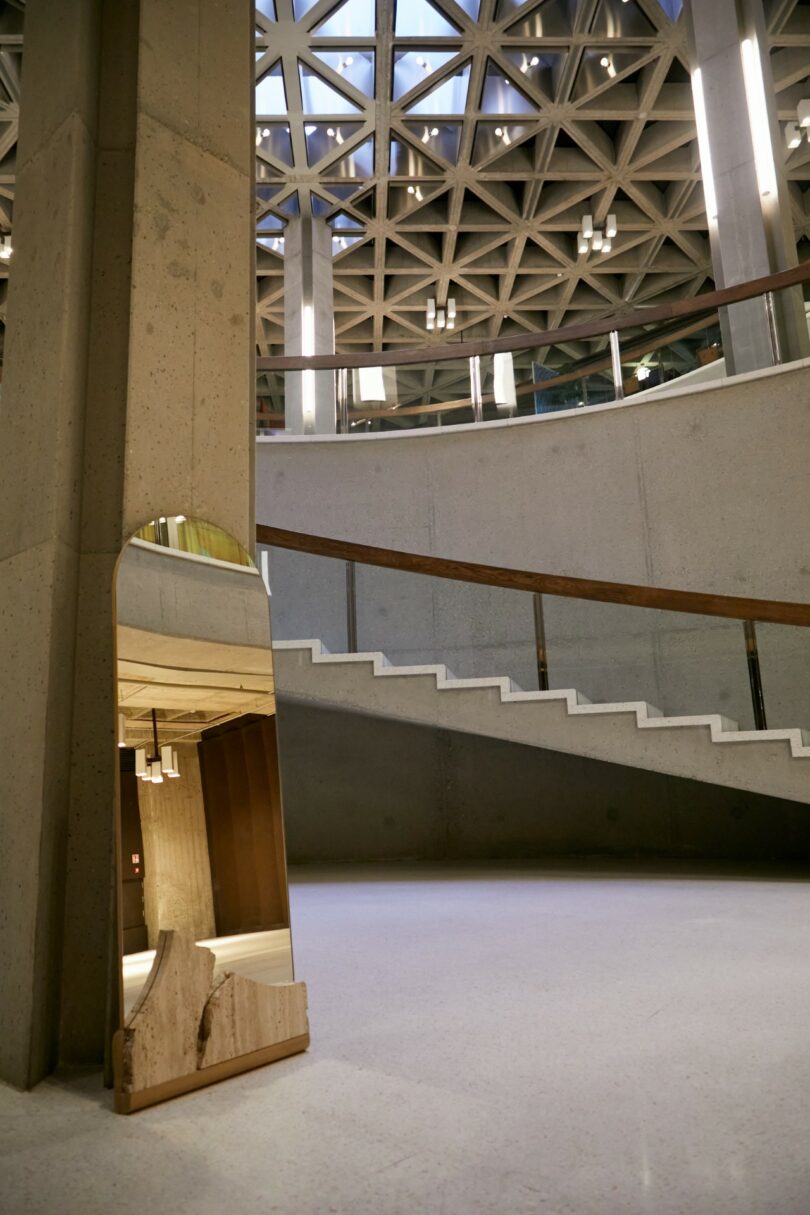
Tethys Mirror \\\ Photo: Oksana Tkachuk
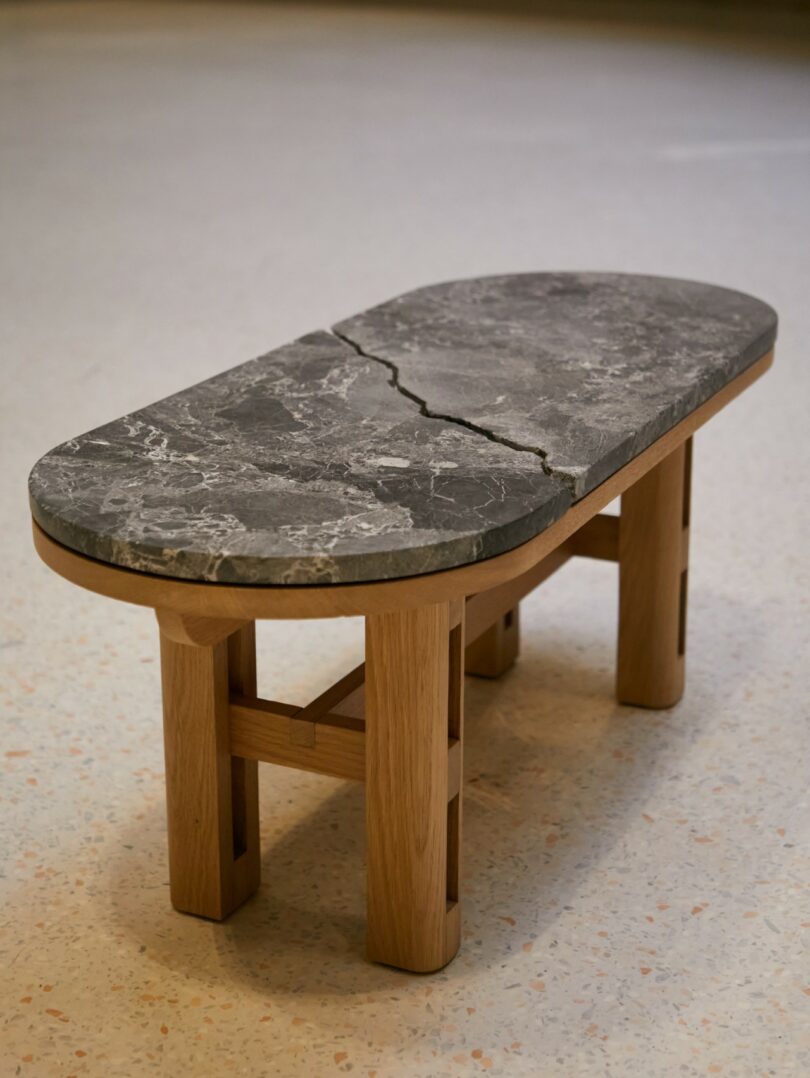
Rift Coffee Table \\\ Photo: Oksana Tkachuk
Lastly, the Rift Coffee Table takes a crack at turning breaks into beauty. Inspired by the surface of her Rift Console and the structure of the Dominican Bench, van Divoet transforms a central fissure into the table’s defining feature. The split tabletop is unified by a precise geometric cut, creating a balance between disruption and cohesion. Made from reclaimed oak paneling and crafted with a digital milling machine, the light, playful structure fits together seamlessly – a surprising revelation that even a crack can be the foundation of something whole.
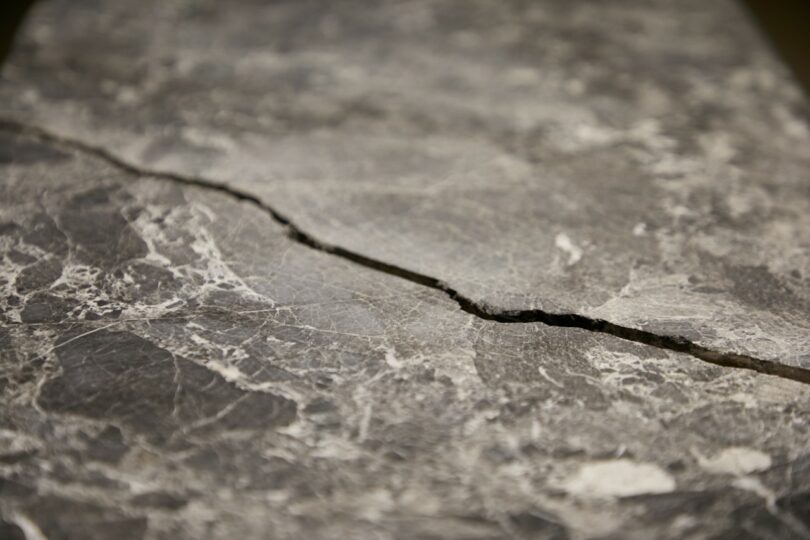
Rift Coffee Table \\\ Photo: Oksana Tkachuk
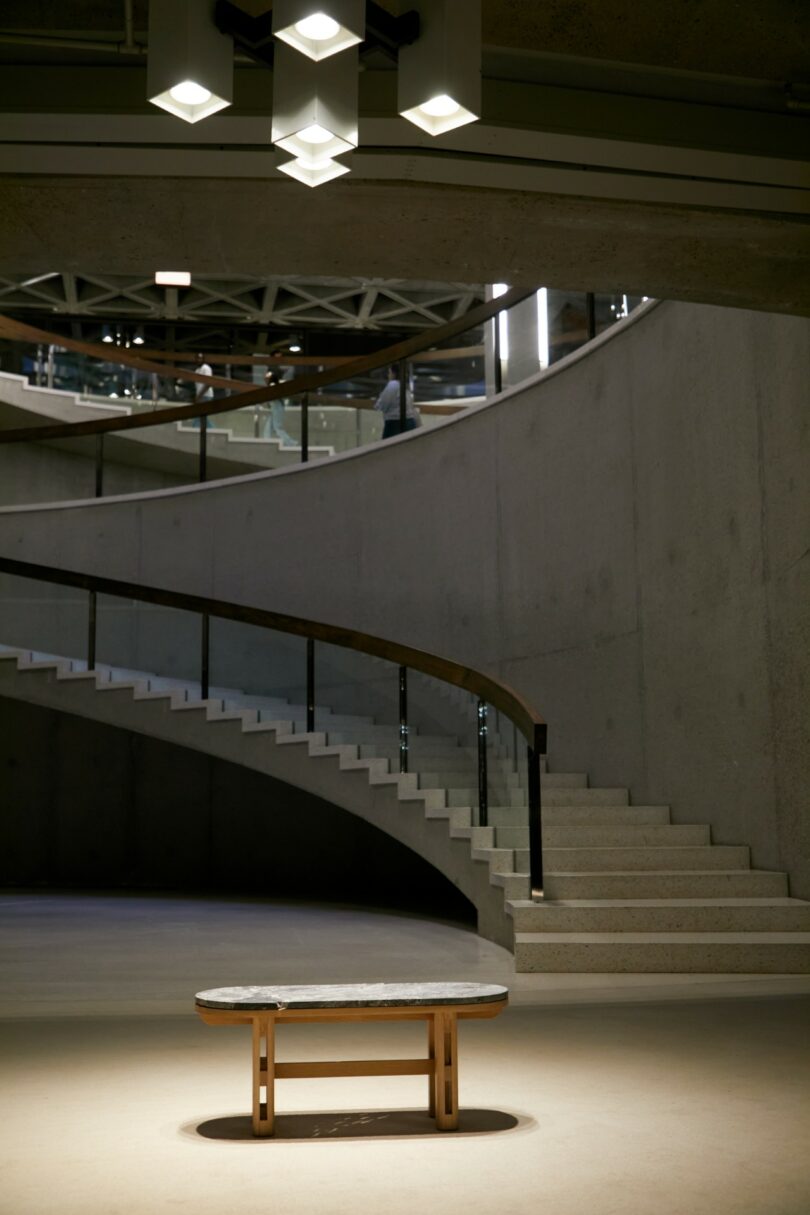
Rift Coffee Table \\\ Photo: Oksana Tkachuk
Fragments, flaws, and fissures are often seen as unsightly, but van Dievoet proves otherwise. Instead of discarding these parts, she transforms them into the driving force of her practice, pushing her to create design that is both inspiring and sustainable.
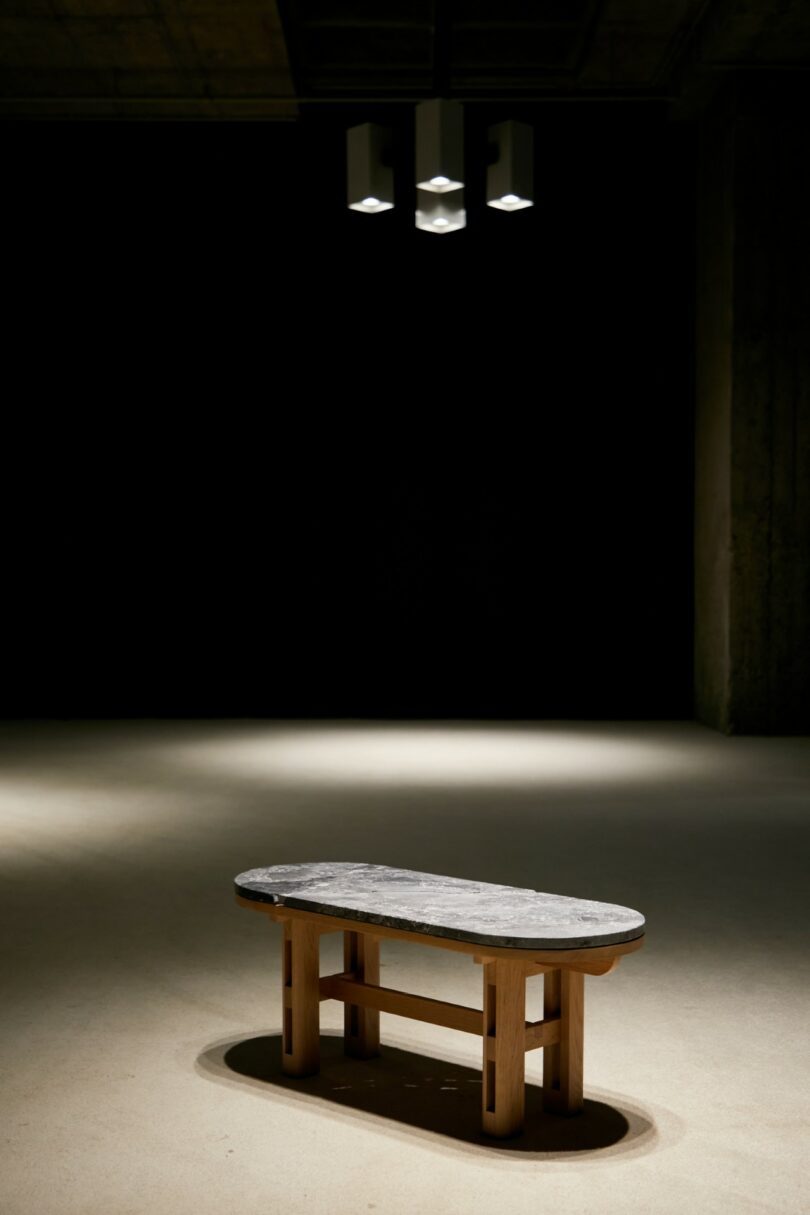
Rift Coffee Table \\\ Photo: Oksana Tkachuk
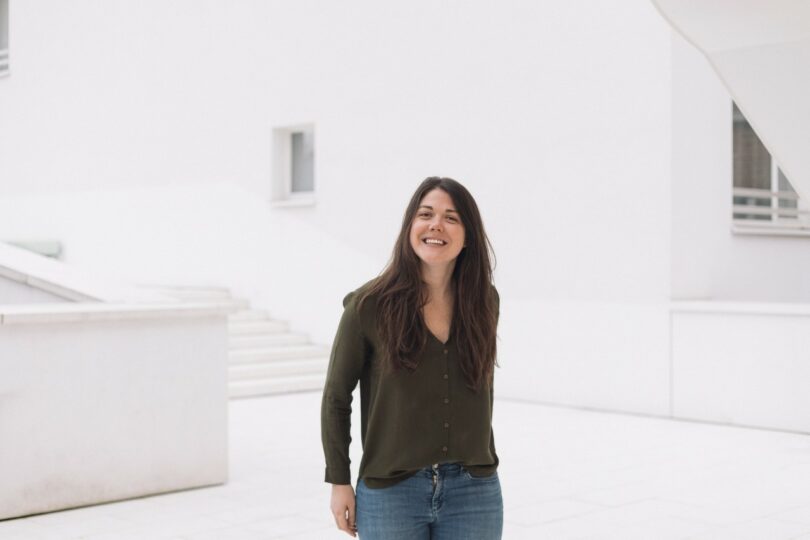
Ariane van Dievoet \\\ Photo: Eline Willaert
Ariane van Dievoet’s work can be viewed at the Curated design fair, the Forward furniture exhibition at Dutch Design Week in Eindhoven (October 18-26, 2025), and the Caress exhibition by B Collective during the MAD Parcours in Brussels this November. To learn more about her practice, visit arianevandievoet.com.
Photography courtesy of Ariane van Dievoet.

